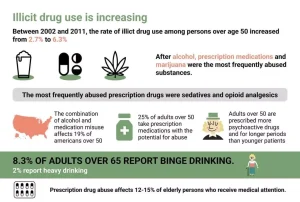
In addition, Sajja & Rahman, have shown that cytisine inhibited chronic voluntary ethanol intake by inhibiting the levels of striatal ΔFosB up-regulation in C57BL/6J mice as demonstrated by behavioral and biochemical methods. Pretreatment with cytisine (0.5 or 1.5 mg/kg) substantially reduced ethanol intake and preference in both paradigms at 2 hr and 24 hr post-treatment. Furthermore, cytisine (0.5 mg/kg) significantly attenuated up-regulation of ΔFosB in the ventral and dorsal striatum following chronic ethanol consumption in intermittent access (IA) and chronic access (CA) paradigms (Sajja & Rahman, 2013). Despite the encouraging results in animal models, lobeline and cytisine, were not been used for the treatment of AUD in human studies. Duloxetine, sold under the brand name Cymbalta (Drugs.com, 2016), a selective serotonin and norepinephrine re-uptake inhibitor (SNRI), is mostly prescribed for major depression and generalized anxiety disorder, fibromyalgia and neuropathic pain (Duloxetine Monograph, ASHSP, 2015). According to a 2014 Cochrane review, duloxetine was reported beneficial for the treatment of diabetic neuropathy and fibromyalgia (Lunn et al., 2014).
Signs and symptoms
However, quetiapine significantly reduced depressive symptoms and improved sleep (Litten et al, 2012). Similarly, limited clinical trials and case-reports yielded conflicting results regarding the efficacy of baclofen (a GABAB agonist) in the treatment of alcohol dependence. A double-blind, placebo-controlled, randomized clinical trial was conducted in Israel comparing 50 mg/day of baclofen or placebo over 12 weeks, in addition to a standard psychosocial intervention program with 26-week and 52-week follow-up observations.
- It usually resembles a flu-like illness characterized by yawning, sneezing, rhinorrhea, nausea, diarrhea, vomiting, and dilated pupils.
- According to the national surveys, more than 90% of American adults who drink excessively reported binge drinking in the past 30 days (NIAAA, 2016b).
- These patients may require high doses of benzodiazepine (diazepam equivalents of about mg) to prevent further seizures and to prevent the development of DT [51].
- Some experts even advice and advocate use of loading doses of diazepam for management of DT.
- The three-question Alcohol Use Disorders Identification Test–Consumption and the Single Alcohol Screening Question instrument have the best accuracy for assessing unhealthy alcohol use in adults 18 years and older.
Medications for Alcohol Withdrawal Symptoms
Org has demonstrated long-lasting properties of suppressing alcohol intake in rodent models with effects superior to most drug candidates for AUD (Spanagel & Kiefer., 2008). The compound has a good safety profile and neither animal studies nor human investigations indicate a positive hedonic profile (Liem-Moolenaar et al., 2013). Pexacerfont (an oral, brain penetrant CRH antagonist), with positive results in animal models (Gehlert et al., 2007), did not show any significant effects in human clinical trials. Kwako et al, evaluated pexacerfont to suppress stress-induced alcohol craving and brain responses in treatment seeking alcohol-dependent patients in early abstinence.

Stage 3: Severe Withdrawal

However, only few studies have examined the role of OTRs in mediating the neuropeptide’s effects on motivational actions of alcohol. Recent studies involving viral-mediated overexpression of OTRs in the NAc core have implicated a role for these receptors in alcohol drinking and conditioned reward (Bahi, 2015; Bahi et al., 2016). McGregor and Bowen, found a long-lasting effect on the OT administration on ethanol preference in rats. Indeed, a single dose of OT (1 mg/kg) produced a progressive reduction in preference for the ethanol-containing beverage as compared to a non-ethanol-containing alcoohol is better than drugs sweet solution and this effect lasted for up to 6 weeks. Additionally, treatment with OT at 1 mg/kg for 2 weeks before the start of a two-bottle free choice paradigm provided evidence that there was a significantly lower ethanol preference in OT-treated than in control rats (McGregor & Bover, 2012). Modulation of the OTR via administration of the OTR agonist carbetocin or gene over-expression of OTRs via a lentiviral vector in NAc resulted in reduced acquisition and ethanol-primed reinstatement of CPP as well as increased rates of extinction (Bahi, 2015).

Medical Professionals
Alcohol consumption spans a spectrum ranging from low risk to severe alcohol use disorder (AUD). Chronic risky drinking or the presence of AUD increases the risk of alcohol withdrawal syndrome.[1] Alcohol withdrawal syndrome poses a significant clinical challenge arising from the spectrum of AUD—a prevalent condition affecting a substantial portion of the United States population. Recently, Roberts et al. 2017, evaluated https://ecosoberhouse.com/boston-sober-house-roxbury/ the efficacy of VAR in alcoholic subjects who reported symptoms of depression. A double-blind, placebo-controlled study involving 60 adults subjects meeting DSM-IV criteria were enrolled in this trial and given VAR (1–2mg/kg/day for one week). VAR also reported to reduce cravings and decreases the pleasurable effects of cigarettes and other tobacco products, thus helping many tobacco addicts to quit smoking.
- Data from the National Co-morbidity Survey and the NIMH Epidemiologic Catchment Program revealed that approximately 14% of the general population has a lifetime history of alcohol dependence.
- Dopamine is another neurotransmitter that is involved in alcohol withdrawal states.
- Patients presenting with alcohol withdrawal syndrome should receive thiamine and folate supplementation as they are often nutritionally deficient.
- For this reason, there have been many attempts to classify symptoms of AWS either by severity or time of onset to facilitate prediction and outcome.
From 24 to 72 Hours
In several studies, possible predictors for the development of a severe AWS have been investigated. Medical history and laboratory biomarkers are the two most important methods for the identification of patients at high risk. AUDs are common in patients referred to neurological departments, admitted for coma, epileptic seizures, dementia, polyneuropathy, and gait disturbances.


Recent Comments